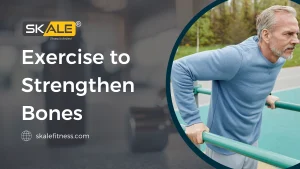The foundation of a strong body starts with a solid leg day workout. Whether you’re a seasoned gym-goer or just getting started, leg day helps build lower body strength, boost athletic performance, and enhance overall fitness. In this guide, we’ll cover everything you need to know about a leg day workout, from exercises and machines to tips on how to make the most out of your time in the gym.
A well-rounded leg day workout targets the major muscles in your lower body, including your quads, hamstrings, glutes, and calves. A combination of exercises using both free weights and leg workout machines ensures that you build strength, muscle endurance, and balance. This guide will walk you through the best exercises and routines for your leg day, and show you how to incorporate variety into your workouts to keep things exciting and effective.
What is a Leg Day Workout?
A leg day workout is dedicated to strengthening the lower half of your body. It typically includes a variety of compound exercises like squats and deadlifts, which work multiple muscles at once, along with isolation movements like leg curls and extensions that focus on specific areas.
A good leg workout can enhance mobility, improve posture, and even aid in fat loss, as your legs contain some of the largest muscles in your body. By incorporating both strength and endurance exercises, you ensure a balanced workout that promotes both muscle growth and cardiovascular fitness.
Muscles Worked in a Leg Day Workout
When you focus on a leg day workout, you target several key muscle groups:
- Quadriceps: These are the muscles in the front of your thigh that help with walking, running, and jumping.
- Hamstrings: Located in the back of your thigh, they help with knee flexion and hip extension.
- Glutes: Your buttocks muscles, which play a crucial role in stabilizing your hips and lower body.
- Calves: The muscles at the back of your lower legs, responsible for movement at the ankle joint.
Each of these muscle groups plays a unique role in daily movement and athletic performance, making it essential to hit them all during your leg day workout.
Exercises for Your Leg Day Workout
A successful leg day workout incorporates a mix of free-weight exercises, bodyweight movements, and leg workout machines. Below are the key exercises to include:
Squats – The King of Leg Workouts
Squats are a staple in any leg day workout. They target your quads, glutes, and hamstrings all at once, making them an incredibly efficient movement.
- Barbell Back Squats: 4 sets of 8-12 reps
- Goblet Squats: 3 sets of 10-15 reps
Lunges – Single-Leg Strength Builder
Lunges are perfect for isolating each leg and working on balance. They focus on quads, hamstrings, and glutes.
- Walking Lunges: 3 sets of 12 reps per leg
- Reverse Lunges: 3 sets of 12 reps per leg
Deadlifts – Building Strong Hamstrings
Deadlifts are excellent for targeting the hamstrings, glutes, and lower back, making them a must for a strong leg workout.
- Romanian Deadlifts: 4 sets of 8-10 reps
- Stiff-Leg Deadlifts: 3 sets of 10-12 reps
Leg Press – Best Leg Workout Machine
If you want to hit your quads and glutes while using leg workout machines, the leg press is ideal. It’s great for those who want to build leg strength without the strain on the lower back.
- Leg Press: 4 sets of 12-15 reps
Best Exercises for Leg Muscles
In addition to squats and deadlifts, there are several other exercises that are considered the best exercises for leg muscles:
- Bulgarian Split Squats: Great for glute and quad isolation.
- Calf Raises: Focuses on building strength in the lower legs.
- Leg Curls: Performed on a machine, this exercise isolates the hamstrings.
Including these exercises in your leg day will ensure a balanced routine that targets all major leg muscles.
Leg Strengthening Exercises for All Levels
If you’re new to working out or looking for some extra variety in your routine, there are plenty of leg strengthening exercises you can do. For beginners, bodyweight squats, lunges, and glute bridges are fantastic exercises to start with. For more advanced exercisers, adding weights to your squats and lunges or incorporating more complex movements like pistol squats and box jumps can help push your progress.
Movement Patterns in a Good Leg Workout
A proper leg day workout should include a variety of movement patterns to ensure every muscle group gets worked. These patterns include:
- Knee Flexion (Bending): Squats, lunges, and step-ups all fall under this category and primarily target your quads.
- Hip Extension (Straightening the Hip): Deadlifts and glute bridges work the muscles at the back of the body, like hamstrings and glutes.
- Ankle Flexion (Calf Raises): This focuses on the calves and supports overall lower leg strength.
Equipment Guide for Leg Workout at the Gym
Gym-goers have access to a variety of leg workout machines that can elevate their workouts. Some of the most common machines include:
- Leg Press Machine: Great for targeting your quads and glutes.
- Hamstring Curl Machine: This isolates the back of your thighs, which helps with knee stability and balance.
- Smith Machine: Allows for controlled squats and lunges, reducing the risk of injury.
Incorporating machines into your leg day workout can add variety and help target muscles more precisely.
How to Make the Most Out of Your Leg Days
To get the most out of your leg day workout, follow these tips:
- Warm-Up: Start with light cardio or dynamic stretching to loosen up your muscles and prepare for heavier lifts.
- Progressive Overload: Gradually increase the weight or resistance in your exercises over time to keep challenging your muscles and promoting growth.
- Rest and Recovery: Give your legs time to recover between workouts, aiming for at least 48 hours between intense leg days.
By following these strategies, you can maximize your gains and prevent injury, ensuring that your leg day workout is both effective and safe.
Conclusion
A well-designed leg day workout is crucial for building strength and endurance in the lower body. By incorporating a mix of free weights, leg workout machines, and various movement patterns, you’ll be on your way to achieving stronger, more toned legs. Whether you’re a beginner or more advanced, the exercises and routines mentioned here will help you build the foundation for strong and healthy legs.
If you have any questions or would like a personalized leg workout routine, feel free to reach out. I’m here to help you reach your fitness goals!




